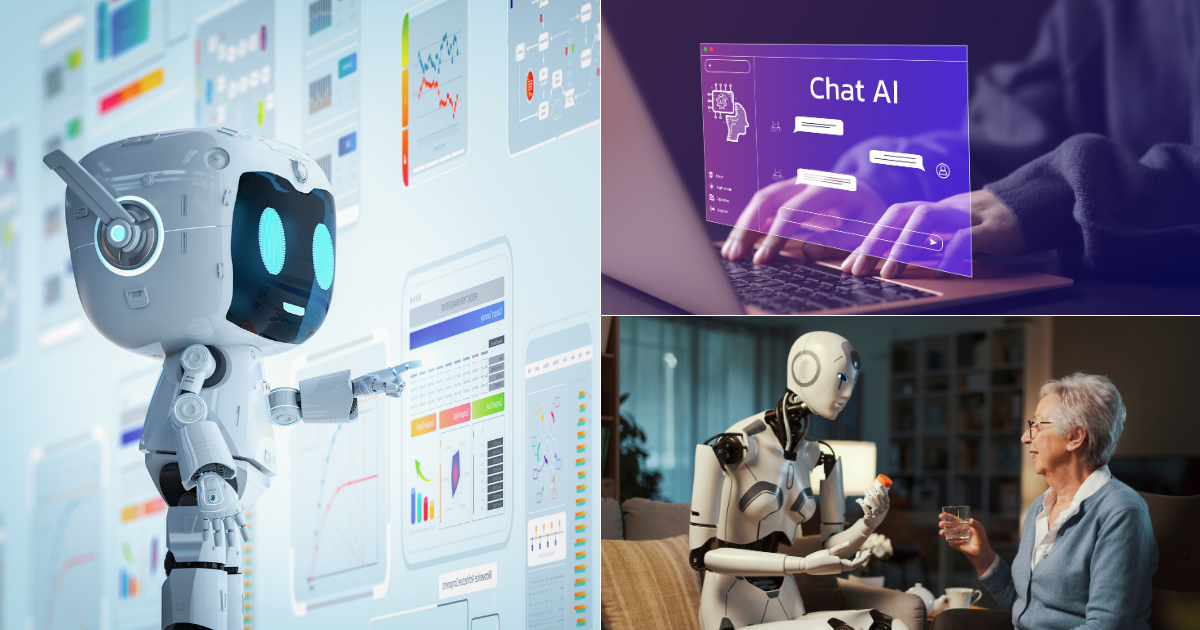Table of Contents
In today’s fast-changing work setting, the use of artificial intelligence (AI) has become a major breakthrough. According to a new study by McKinsey, 70% of businesses are expected to use at least one kind of AI tool by 2030. Among these tools, AI chatbots and assistants are becoming very popular. But what exactly is the difference between these two tools, and how can they help job seekers and HR professionals? This article aims to explain these differences and offer insights into their uses in the workplace.
Understanding AI Chatbots
Definition and Functionality
AI chatbots are computer programs created to copy human talk through text or voice chats. They use a system called natural language processing (NLP) to comprehend user questions and provide suitable responses. Chatbots can follow fixed rules, or they can be powered by machine learning methods that allow them to learn from conversations and improve over time.
For example, a rule-based chatbot might be set up to answer specific questions like “What are your office hours?” with a fixed reply. In contrast, a machine learning chatbot can look at past interactions to give more detailed answers, adjusting to user preferences and language over time.

For example, a chatbot that follows rules might be set up to reply to certain questions like “What are your office hours?” with a set answer. On the other hand, a chatbot that uses machine learning can study past conversations to give more detailed responses, adjusting to user likes and language over time.
Use Cases in the Workplace
Chatbots have found a variety of applications in the workplace, particularly in human resources (HR) and recruitment. Here are some key benefits:
- 24/7 Availability: Chatbots can provide instant responses to employee queries, reducing the workload on HR teams. This is particularly useful for companies with global teams across different time zones.
- Streamlined Recruitment: They can screen candidates by asking preliminary questions, thus speeding up the hiring process. For example, a chatbot can ask candidates about their availability, skills, and experience, filtering out those who do not meet the basic requirements.
- Employee Onboarding: Chatbots can guide new hires through the onboarding process, answering questions and providing resources. This can include everything from company policies to training schedules, ensuring that new employees feel supported from day one.
- Feedback Collection: Chatbots can also be used to gather employee feedback through surveys, making it easier for HR to assess employee satisfaction and areas for improvement.
Understanding AI Assistants
Definition and Functionality
AI assistants, however, are more advanced tools made to do a wider range of tasks. They can handle schedules, set reminders, and even connect with other software programs to simplify workflows. Unlike chatbots, AI assistants usually have voice recognition abilities, letting you operate them without using your hands.

For instance, an AI assistant like Google Assistant or Amazon Alexa can help users handle their calendars, send emails, and even control smart devices in their homes or offices. This flexibility makes AI assistants useful tools for improving productivity.
Use Cases in the Workplace
AI assistants can greatly increase efficiency in different ways:
Task Organization: They help workers set task priorities and use their time well. For example, an AI assistant can check a worker’s schedule and suggest the best times for focused work, meetings, or breaks.
Meeting Planning: AI assistants can arrange meetings automatically by finding when everyone is available, reducing the usual back-and-forth emails. This tool can save many hours each week, especially for large groups.
Information Review: Some AI assistants can look at information and create reports, giving useful insights for making decisions. For instance, an AI assistant can collect data from many sources and make a summary report, helping leaders make quick, informed decisions.
Custom Suggestions: AI assistants can learn user preferences over time, giving personalized advice for tasks, meetings, and even career growth opportunities.
Key Differences Between Chatbots and Assistants
Interaction Style
One of the most noticeable differences between chatbots and AI assistants is their interaction style. Chatbots usually engage in text-based conversations, while AI assistants often use voice commands. This difference can affect user experience a lot. For example, a job seeker might like using a voice-activated AI assistant to quickly set reminders for application deadlines, while an HR professional might use a chatbot to answer FAQs from employees.
Complexity and Tasks
When it comes to complexity, AI assistants generally handle more complicated tasks than chatbots. While chatbots can answer simple questions, AI assistants can manage multi-step processes. For example, an AI assistant can not only schedule a meeting but also send out calendar invites, prepare an agenda, and even follow up with participants afterward.
Learning and Adaptability
Another key difference is in their learning abilities. AI assistants often use machine learning methods that let them adapt to user behavior over time. This means they can become more efficient and effective as they learn from interactions. In contrast, many chatbots may need manual updates to improve their responses, making them less adaptable in changing environments.
Choosing the Right Tool for Your Needs
Factors to Think About
When picking between an AI chatbot and an AI assistant, job seekers and HR professionals should think about several factors:
Purpose: Decide what you need the tool for. If you need quick answers to FAQs, a chatbot might be enough. For more complex tasks, an AI assistant is probably a better choice.
User Experience: Think about how comfortable you and your team are with technology. Some might like the simplicity of chatbots, while others might gain from the advanced features of AI assistants.
Integration: See how well the tool fits with current systems. An AI helper that can connect with your calendar and email might be more useful than a separate chatbot.
Cost: Think about the budget for using these tools. While chatbots can be cheaper, AI assistants might give a higher return on investment through increased productivity.
Scalability: Consider the future needs of your organization. As your team grows, you might need a stronger solution that can handle more complexity and volume.
Example of an AI-Friendly Resume
In the context of job seeking, having an AI-friendly resume can make a big difference. An AI-friendly resume is made to be easily read and understood by both human recruiters and AI systems. Here are some key parts to include:
Keywords: Use industry-specific keywords that fit the job description. This helps ensure that your resume passes through Applicant Tracking Systems (ATS) that many companies use.
Clear Formatting: Avoid complex layouts; use standard fonts and bullet points for easy reading. A clean, organized format makes it easier for both AI and human reviewers to judge your qualifications.
Concise Language: Keep descriptions short and to the point, focusing on achievements rather than duties. Use action verbs to show your contributions clearly.
Example:
John Doe [Your Address] [Your Email] [Your Phone Number] Objective: Dynamic HR professional with over 5 years of experience in recruitment and employee engagement. Experience: HR Specialist, XYZ Corp - Streamlined the recruitment process, reducing time-to-hire by 30%. - Implemented an employee onboarding chatbot, improving new hire satisfaction by 20%. Education: Bachelor of Arts in Human Resources Management [Your University]
Have you used an AI tool in your job search? Share your experience in the comments!”
Conclusion
In summary, understanding the differences between AI chatbots and assistants is crucial for job seekers and HR professionals alike. While chatbots excel in handling straightforward queries, AI assistants offer a more comprehensive solution for managing tasks and enhancing productivity. By carefully considering your needs and the specific functionalities of each tool, you can make an informed decision that will benefit your career or organization.
As AI continues to evolve, staying informed about these technologies will be essential. What are your thoughts on AI chatbots and assistants? Have you found one more beneficial than the other in your experience? Share your insights in the comments below!
Want to learn more about our family-friendly tech blog? Check out our “Hello Read Me” for an introduction to our mission, topics, and more.



















What do you think?
Show comments / Leave a comment